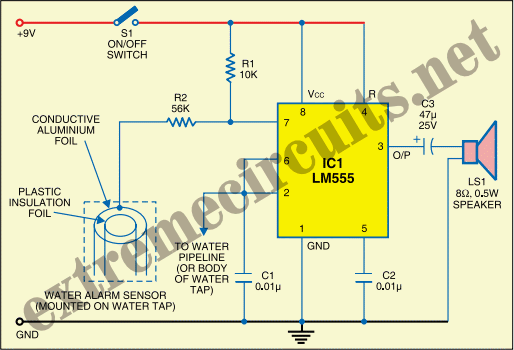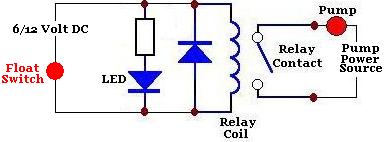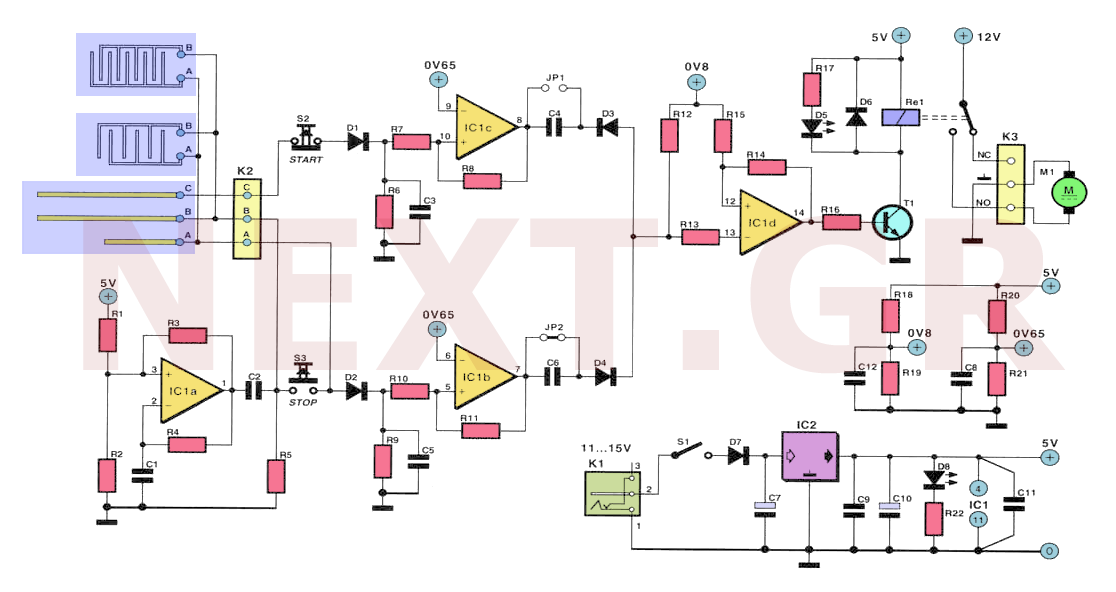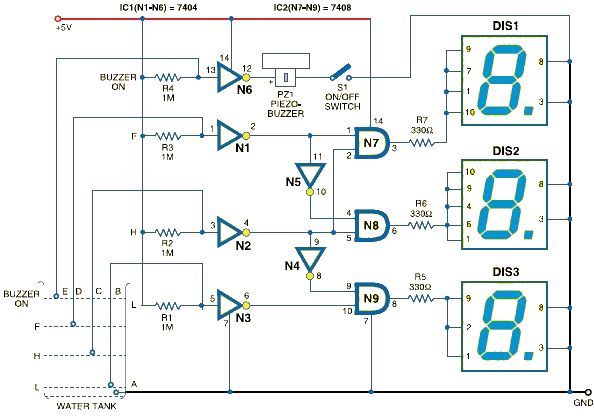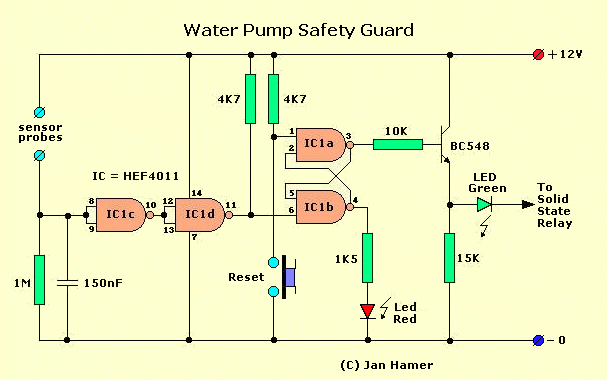
Water AlarmCircuit
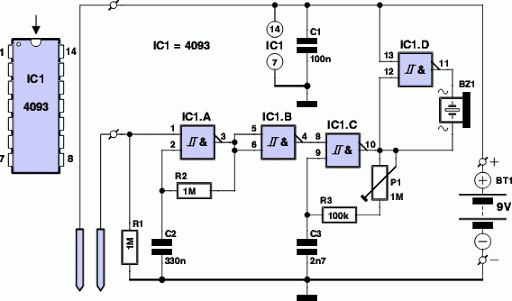
Have you ever seen the stairs to one of the upper stories in your house turn into a waterfall? Or maybe you've come home to find your aquarium fish trying to...
The provided description suggests a scenario involving unexpected water flow, which could be interpreted as a malfunction in plumbing or a leak. In the context of electronics, this situation may relate to a water detection system designed to monitor and respond to the presence of water in areas where it should not be, such as near stairs or in aquariums.
A water detection circuit typically consists of several key components: a water sensor, a microcontroller, a power supply, and an alert mechanism. The water sensor is usually a pair of conductive probes that detect the presence of water by completing a circuit when moisture is present. This sensor can be connected to a microcontroller, which processes the input from the sensor.
The microcontroller can be programmed to trigger an alert when water is detected. This alert can take various forms, such as activating a buzzer, sending a notification to a smartphone, or even shutting off a water supply valve to prevent flooding. The power supply is crucial for ensuring that all components operate reliably; it may consist of batteries or a connection to the mains power.
In terms of schematic design, the water detection circuit would include the following connections: the water sensor probes would connect to the input pins of the microcontroller. The microcontroller's output pins would be connected to the alert mechanism, while the power supply would connect to both the microcontroller and the sensor. Additionally, it may be beneficial to include a resistor in series with the sensor to limit current and protect the microcontroller from potential damage.
Overall, the design of a water detection system is essential for preventing water damage in residential areas, providing timely alerts, and ensuring safety in environments where water presence could lead to hazardous situations.Have you ever seen the stairs to one of the upper stories in your house turn into a waterfall? Or maybe you ve come home to find your aquarium fish trying.. 🔗 External reference
The provided description suggests a scenario involving unexpected water flow, which could be interpreted as a malfunction in plumbing or a leak. In the context of electronics, this situation may relate to a water detection system designed to monitor and respond to the presence of water in areas where it should not be, such as near stairs or in aquariums.
A water detection circuit typically consists of several key components: a water sensor, a microcontroller, a power supply, and an alert mechanism. The water sensor is usually a pair of conductive probes that detect the presence of water by completing a circuit when moisture is present. This sensor can be connected to a microcontroller, which processes the input from the sensor.
The microcontroller can be programmed to trigger an alert when water is detected. This alert can take various forms, such as activating a buzzer, sending a notification to a smartphone, or even shutting off a water supply valve to prevent flooding. The power supply is crucial for ensuring that all components operate reliably; it may consist of batteries or a connection to the mains power.
In terms of schematic design, the water detection circuit would include the following connections: the water sensor probes would connect to the input pins of the microcontroller. The microcontroller's output pins would be connected to the alert mechanism, while the power supply would connect to both the microcontroller and the sensor. Additionally, it may be beneficial to include a resistor in series with the sensor to limit current and protect the microcontroller from potential damage.
Overall, the design of a water detection system is essential for preventing water damage in residential areas, providing timely alerts, and ensuring safety in environments where water presence could lead to hazardous situations.Have you ever seen the stairs to one of the upper stories in your house turn into a waterfall? Or maybe you ve come home to find your aquarium fish trying.. 🔗 External reference
